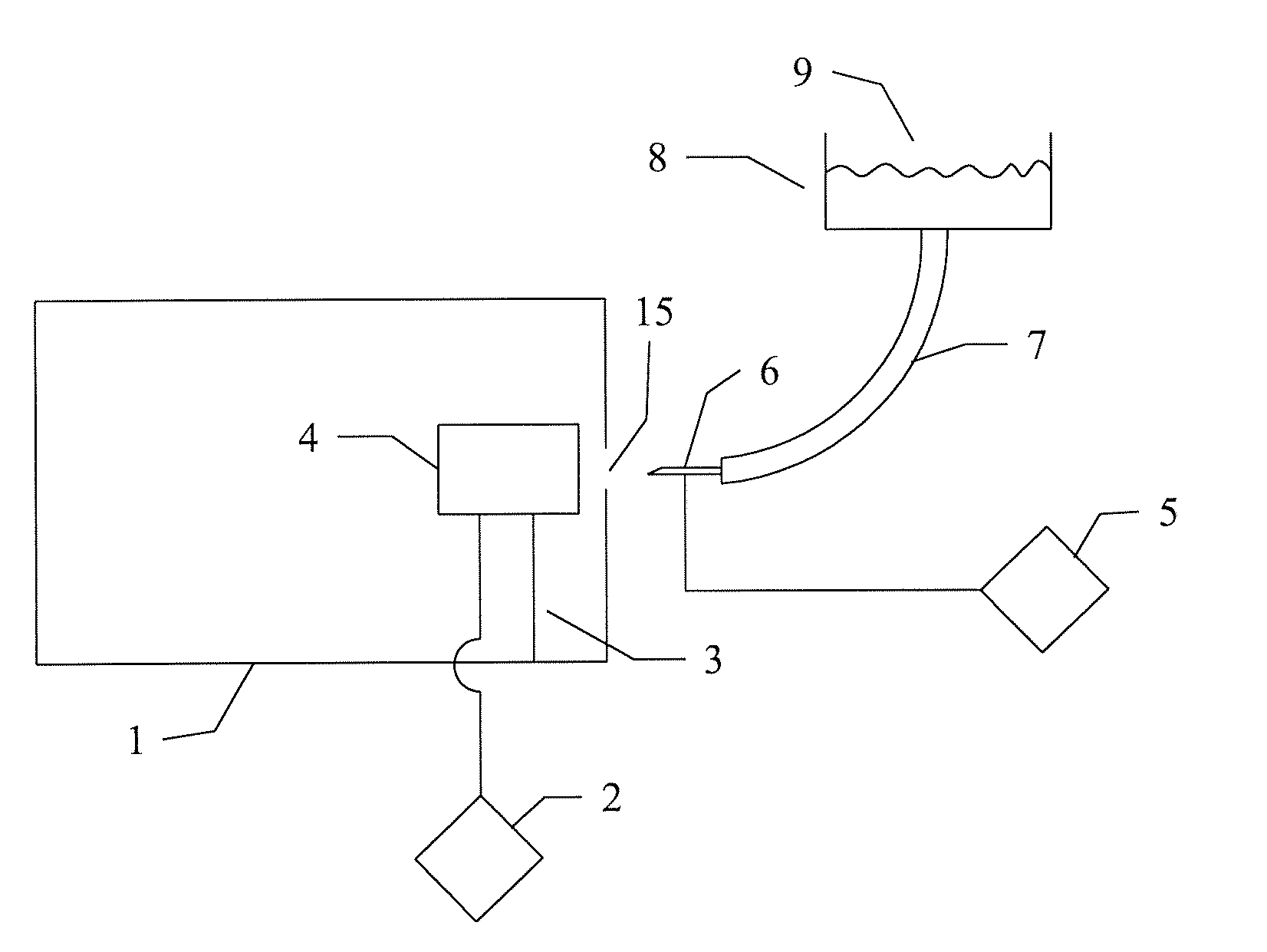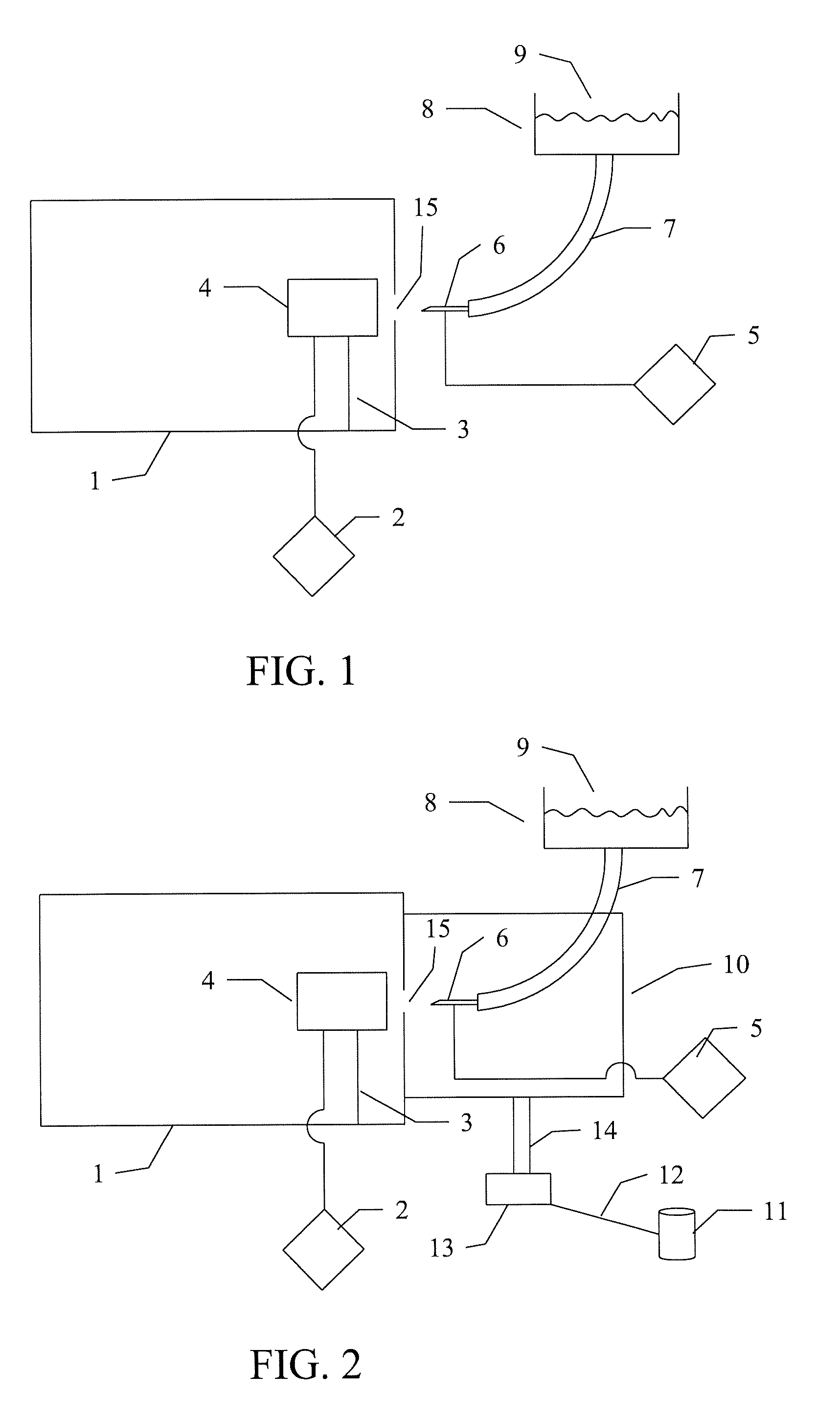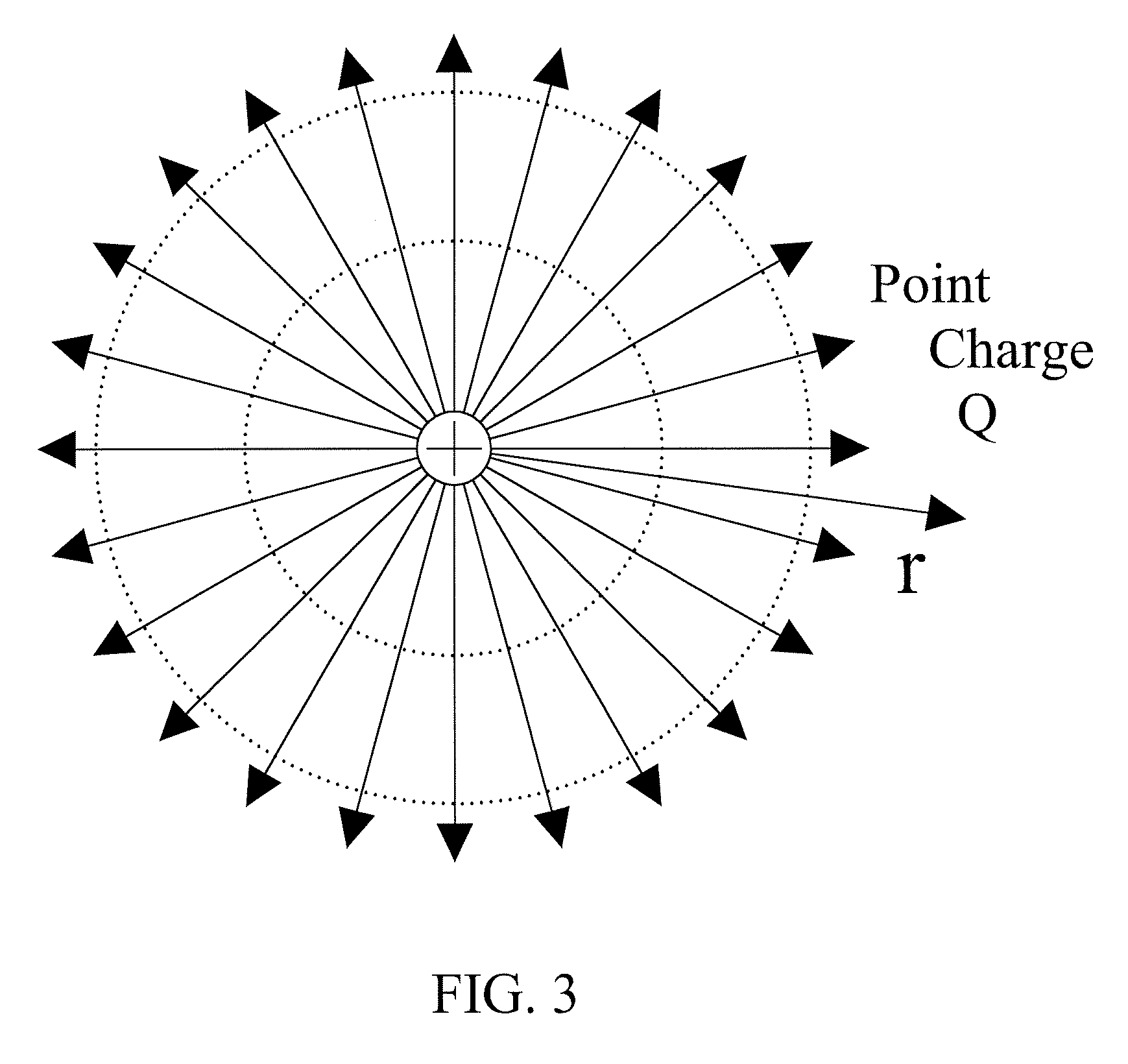Molecular plasma deposition of colloidal materials
- Summary
- Abstract
- Description
- Claims
- Application Information
AI Technical Summary
Benefits of technology
Problems solved by technology
Method used
Image
Examples
example 1
for Molecular Plasma Deposition
[0068]An exemplary apparatus includes a vacuum chamber with a small aperture, and a small bore, metallic needle connected to a tube connected to a reservoir holding a liquid suspension or solution of the material desired to be deposited. The reservoir is at atmospheric pressure. A power supply with the ability to supply up to 60 kV can be employed; however, as used in the examples herein, the voltage attached to the needle is typically −5000 volts to +5000 volts. A substrate inside the vacuum chamber, is centered on the aperture with a bias from −60 kV through −60 kV, including ground. The apparatus is illustrated in FIG. 1.
example 2
for Molecular Plasma Generation under Selected Environments
[0069]The apparatus illustrated in FIG. 2 can be modified such that the needle, tube, and reservoir are disposed in an enclosure that excludes air, but allows for the controlled introduction of other gases. Optionally selected gases include argon, oxygen, nitrogen, xenon, hydrogen, krypton, radon, chlorine, helium, ammonia, fluorine and combinations of these gases.
example 3
for Corona Discharge Generation Under Reduced Pressure
[0070]In the apparatus shown in FIG. 1, the pressure differential between the corona discharge and the substrate is about one atmosphere. The outside pressure of the vacuum chamber is approximately 760 Torr, whereas pressure in the area of the substrate is approximately 0.1 Torr.
[0071]The apparatus shown in FIG. 2, on the other hand, can be optionally operated at a pre-determined pressure above or below atmospheric pressure. While atmospheric pressure is generally preferred for generation of the plasma, reduced pressure up to about 100 mTorr may in some instances provide satisfactory depositions.
PUM
| Property | Measurement | Unit |
|---|---|---|
| Pressure | aaaaa | aaaaa |
| Electric potential / voltage | aaaaa | aaaaa |
| Size | aaaaa | aaaaa |
Abstract
Description
Claims
Application Information
 Login to View More
Login to View More - R&D
- Intellectual Property
- Life Sciences
- Materials
- Tech Scout
- Unparalleled Data Quality
- Higher Quality Content
- 60% Fewer Hallucinations
Browse by: Latest US Patents, China's latest patents, Technical Efficacy Thesaurus, Application Domain, Technology Topic, Popular Technical Reports.
© 2025 PatSnap. All rights reserved.Legal|Privacy policy|Modern Slavery Act Transparency Statement|Sitemap|About US| Contact US: help@patsnap.com



